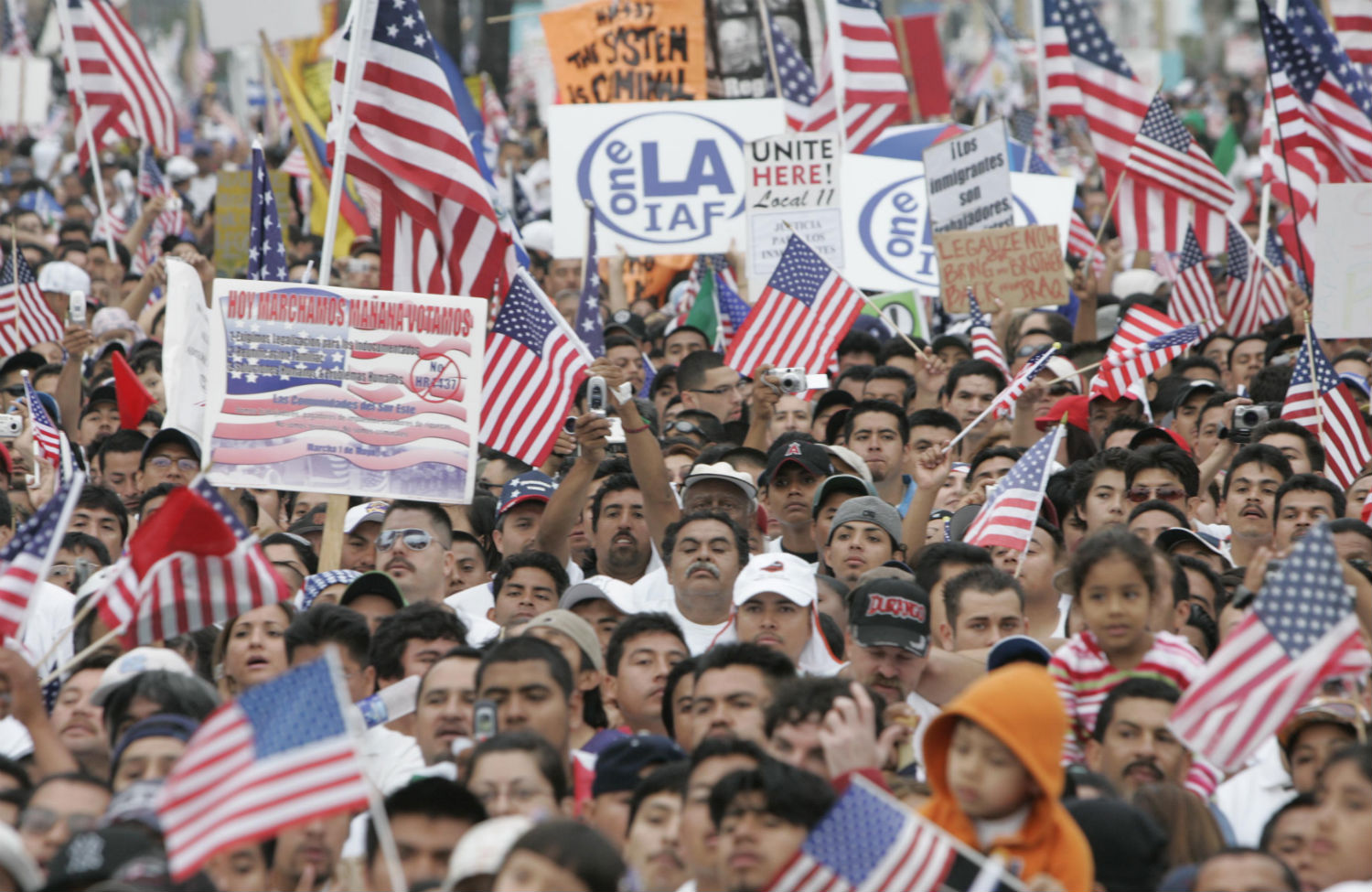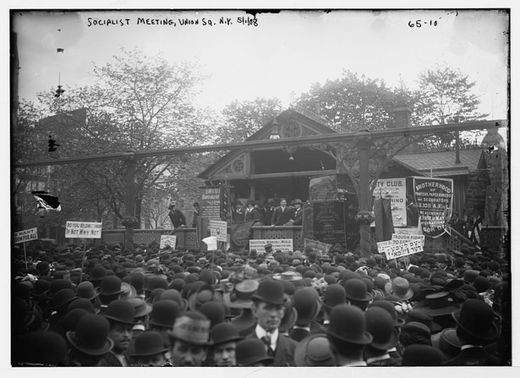
Obama isn't the first president to declare May 1 Loyalty Day - that was President Eisenhower, in 1959, after Congress made it an official holiday in the fall of 1958. Loyalty Day, the history books explain, was "intended to replace" May Day. Every president since Ike has issued an official Loyalty Day proclamation for May 1.
The presidential proclamation always calls on people to "display the flag." In case you were wondering, that's the stars and stripes, not the red flag. Especially in the fifties, if you didn't display the stars and stripes on Loyalty Day, your neighbors might conclude that you were some kind of red.
During the 1930s and 1940s, May Day parades in New York City involved hundreds of thousands of people. Labor unions, Communist and Socialist parties, and left-wing fraternal and youth groups would march down Fifth Avenue and end up at Union Square for stirring speeches on class solidarity.
In the fifties, Loyalty Day parades replaced May Day parades. If you Google "Loyalty Day parade," you get a quarter of a million hits. Long Beach, California, claims to have "the longest consecutively running loyalty commemoration in the nation!" (Exclamation point theirs.) The Veterans of Foreign Wars started theirs in 1950, nine years before Ike's declaration. This year's Loyalty Day parade in Long Beach will be the same as always: high school marching bands, vintage cars, riders on horses and floats, as well as the required military color guard. Also clowns.
The first May Day proclamation made the Cold War context pretty clear: "Loyalty to the United States of America," Ike said, "is essential to the preservation of our freedoms in a world threatened by totalitarianism." That was the idea: "we" represented freedom, and "they" were "the enemies of freedom." Of course, in 1959 our "freedoms" included segregation for blacks and blacklisting for reds, and our "Free World" allies included dictators and tyrants like Chiang Kai-Shek in Formosa, Marcos in the Philippines, the Shah in Iran and whoever was running South Korea.
Obama's proclamation in 2013 said that on Loyalty Day we should reaffirm our commitment to "liberty, equality, and justice for all." That's not terribly original, but it's not bad - especially if he really means "all" people. Skeptics might suggest his statement is an empty cliché; they might point to many cases where Obama has denied liberty, equality and justice to all (one example: US citizens killed without a trial).
In Los Angeles, where I live, the biggest parade on May 1 came in 2006, when 400,000 people marched down Wilshire Boulevard for immigrants' rights. They carred signs that said "Si se puede!" ("Yes we can") and "This land is your land/This land is my land." That May 1 was May Day - and it was a lot better than Loyalty Day.




He declares it "Loyalty Day" instead of the true representation of what it stands for..."Worker's Day". Seriously, what the f*!k is wrong with this guy? Oh wait a minute...I don't think there's enough space on SoTT's comment area to do so.
Psychopathic lunatics' behavior never ceases to astound me, as they continue their descent to a "new" low in the development of the human type.